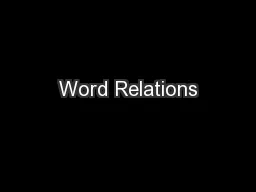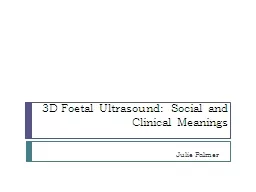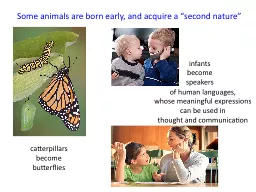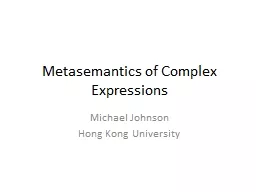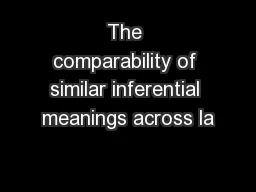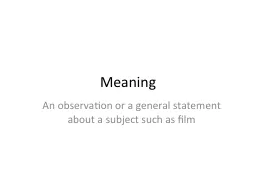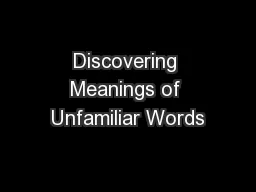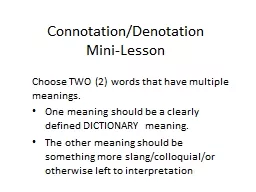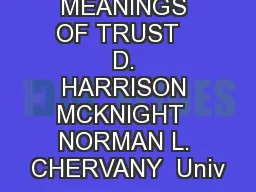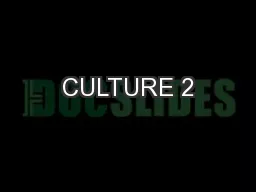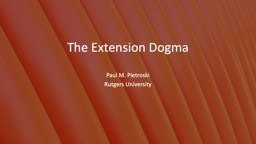PPT-Extension of meanings
Author : myesha-ticknor | Published Date : 2019-11-07
Extension of meanings Umnia Jamal 1 Literal and nonliteral meaning Janes eyes nearly popped out of her head Jane was very surprised 11 The reading of a word with
Presentation Embed Code
Download Presentation
Download Presentation The PPT/PDF document "Extension of meanings" is the property of its rightful owner. Permission is granted to download and print the materials on this website for personal, non-commercial use only, and to display it on your personal computer provided you do not modify the materials and that you retain all copyright notices contained in the materials. By downloading content from our website, you accept the terms of this agreement.
Extension of meanings: Transcript
Download Rules Of Document
"Extension of meanings"The content belongs to its owner. You may download and print it for personal use, without modification, and keep all copyright notices. By downloading, you agree to these terms.
Related Documents


